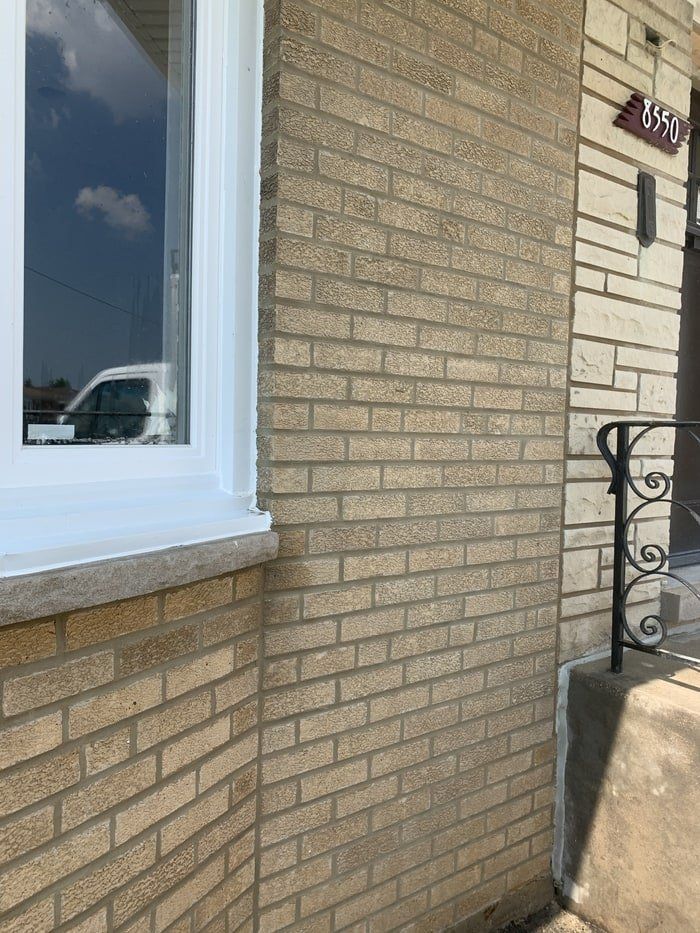What is the difference between tuckpointing and repointing?
Tuckpointing and repointing are terms that are often heard in construction industry and specifically with masons. Many people don’t really know if they are the same or different, and often use these words interchangeably. For the common homeowner who does not know specifics about these words but may have stumbled on them when searching for ways to repair a part of their home, it may be super confusing. In this article, we will talk about what tuckpointing and repointing really are, how they are alike but also different, and how to know what your home and structure actually need.
Why do we need tuckpointing and repointing?
The mortar which holds your masonry units such as brick and cement will eventually weaken over time. This will result in the deterioration around the area because the glue that supposedly pieces the structure together will break apart and allow water to leak in, and moisture to ultimately penetrate it. To avoid further damage, it will need to be repaired and sealed tightly. This is where tuckpointing and repointing come in.
Tuckpointing vs repointing. Are they the same?
There is actually one main reason why tuckpointing and repointing cause confusion: it is simply because they sound the same. As kids, we often used some words interchangeably because they rhymed or we thought they meant the same thing. It is normal and understandable to think that the other is just another word for the other, especially if you are unaware of the terms used in building construction and structural repairs. However, if you want to have your home built or repaired, you will need to know exactly what they are for you to pinpoint what the particular part of your home will have to undergo.
What is repointing?
In masonry, repointing is the method of removing the old mortar and filling it with a fresh mortar to seal the area that will prevent moisture to seep in.
The most common and efficient way of repointing is usually through these steps:
1. The first thing to do is to remove the old mortar on your structure. It is done by gently chiseling or grinding out at least half an inch of the worn-out mortar. Once done, brush out the dust left on the area. There will now be gaps on the joints that you can easily see, the person doing the repointing should then wet the surface of your structure to hydrate it.
2. The next thing to do is to mix the new mortar. It is very important to use the right materials and measurements when doing so, not to mention that you will need to be sure to have the color of the new one match the original.
3. Using various tools such as a pointing trowel, you can now insert the new mixture of mortar into the gaps of the old one. This part will need your extreme focus and patience as it can be a long and messy process. If there are any excess mortar smudges to your bricks you can easily scrape it off with the flat part of the trowel.
4. When the mortar is nearly dry after waiting for a few hours, you can scrape the excess and clean it off using a wire brush.
What about tuckpointing?
In masonry, tuckpointing is the method of restoring the damaged bricks of your building just like repointing by resealing the gaps with fresh mortar. However, the process uses a technique utilizing two colors for the new mortar mixture - one to match the old one and the other as a contrasting color, while repointing only uses one. This process was invented in England to replicate the appearance of a rubbed brick that can be quite expensive.
The most common and efficient way of tuckpointing is usually the same steps as repointing above, but instead of using one color, your bricklayer will match one color to the original shade of your mortar and use another contrasting color that is meant to make your bricks appear more aesthetically pleasing and expensive.
How do I know which service I need?
These masonry techniques are usually employed whenever there are damage and impairments to a part of your structure.
If you see the following in your home:
- Recessed joints
- Stress cracks usually found above windows and doors
- Step-like cracks in your walls
Repointing would often be the first choice as the signs above can be an emergency that needs to be fixed as soon as possible. However, if you want to repair your house while also making it look more attractive, tuckpointing would be the one for you.
The main difference between repointing and tuckpointing is that the latter takes the method one step further by also putting the visual of your home as a priority. Though both the process of repointing and tuckpointing requires experience and skill, tuckpointing is viewed as more of an art in masonry that is usually being used not only for repair but also for the beautification of structures.



